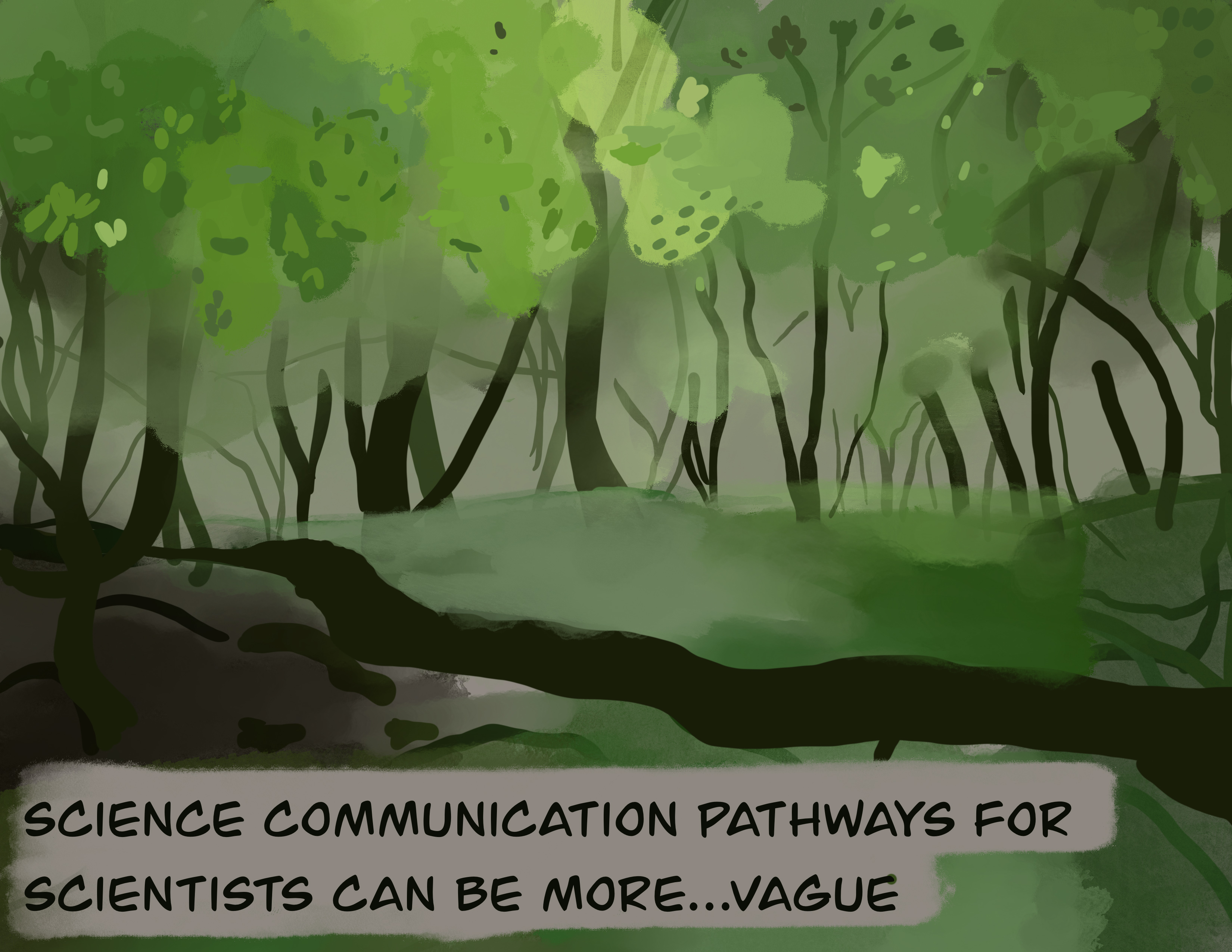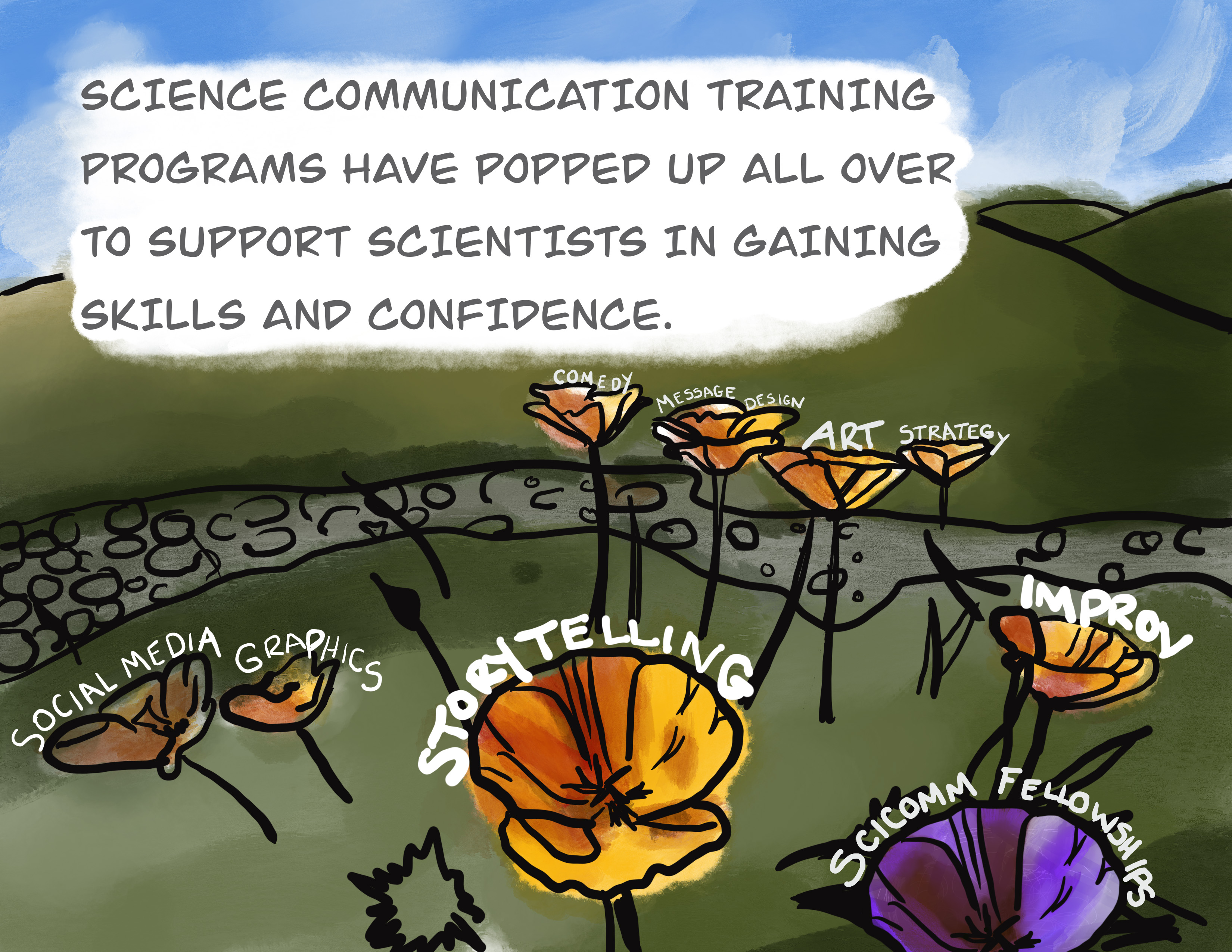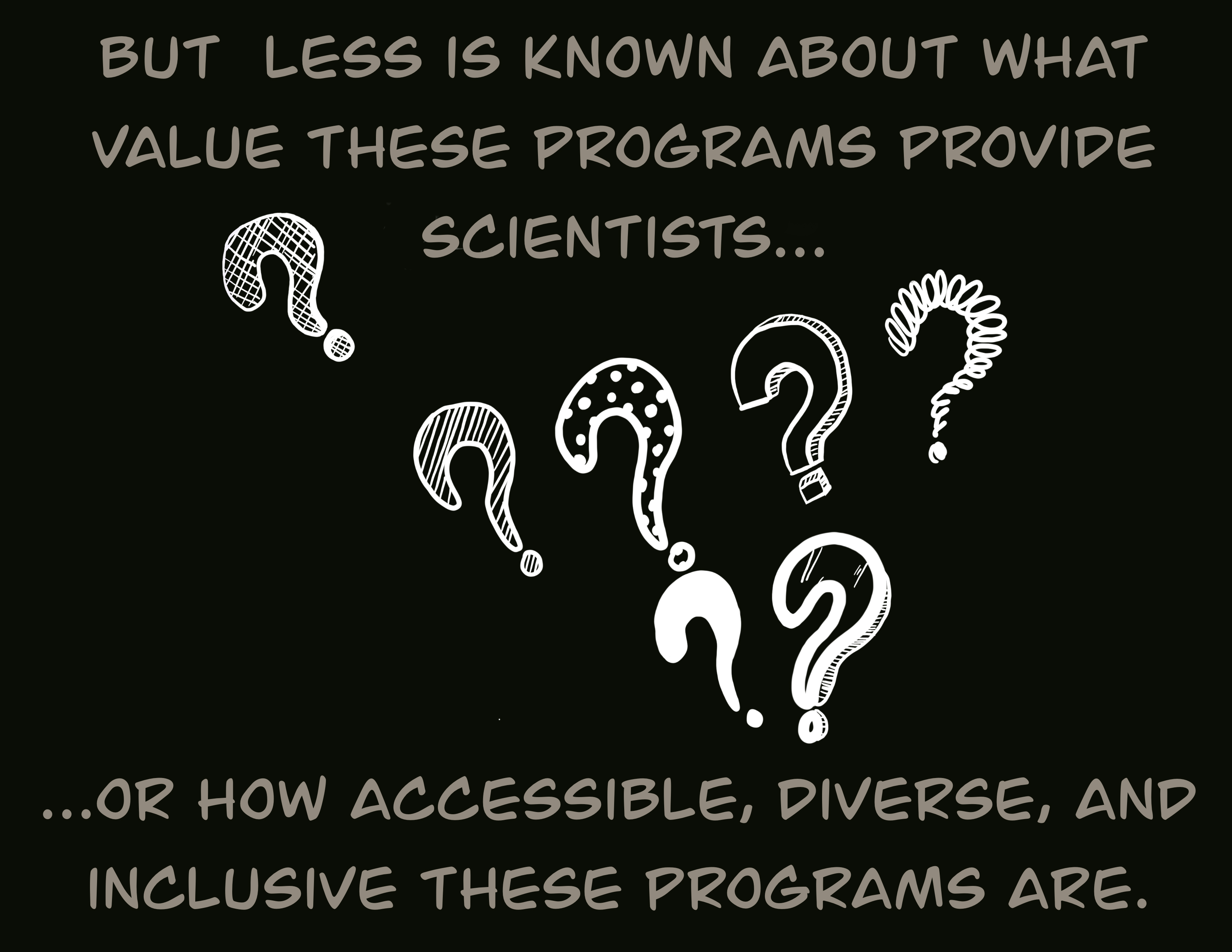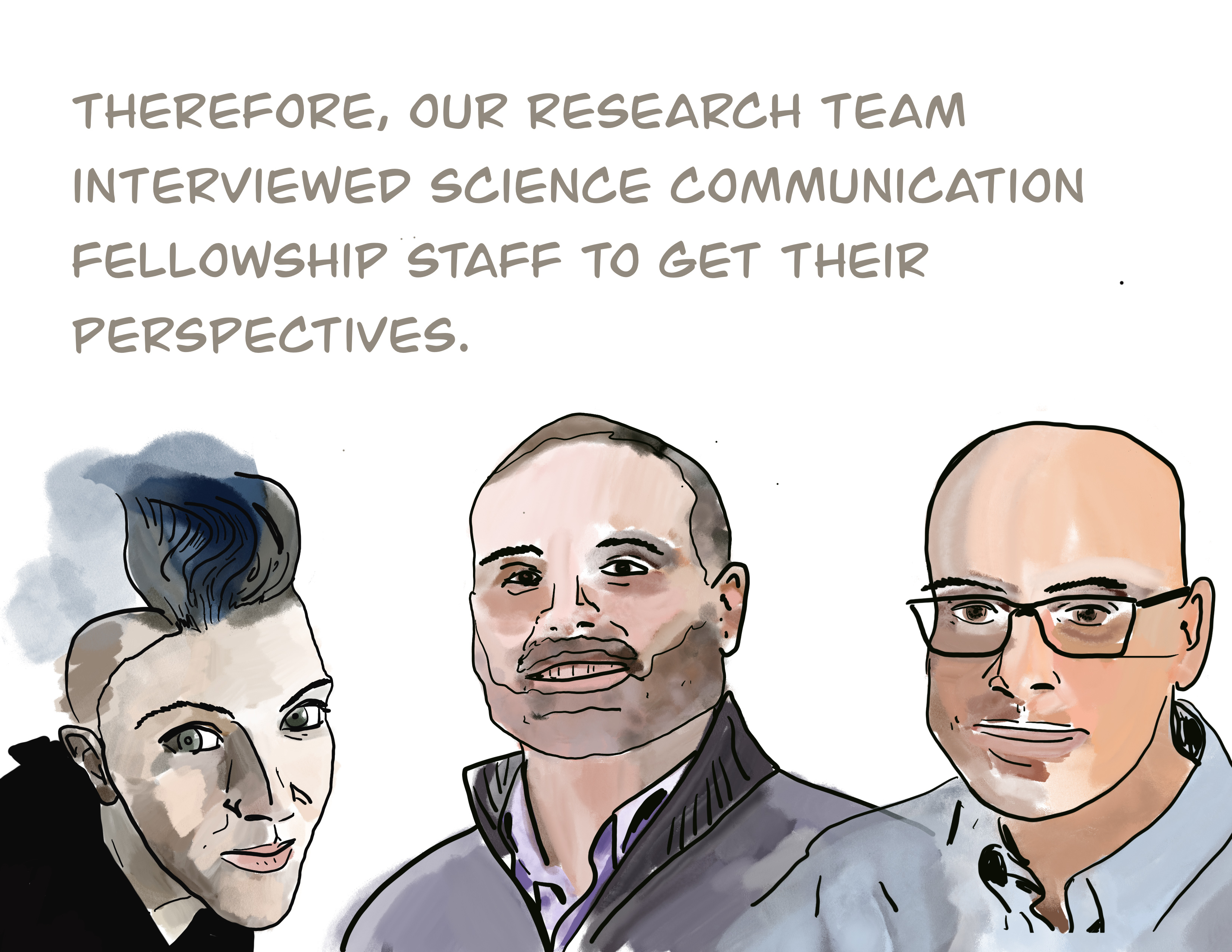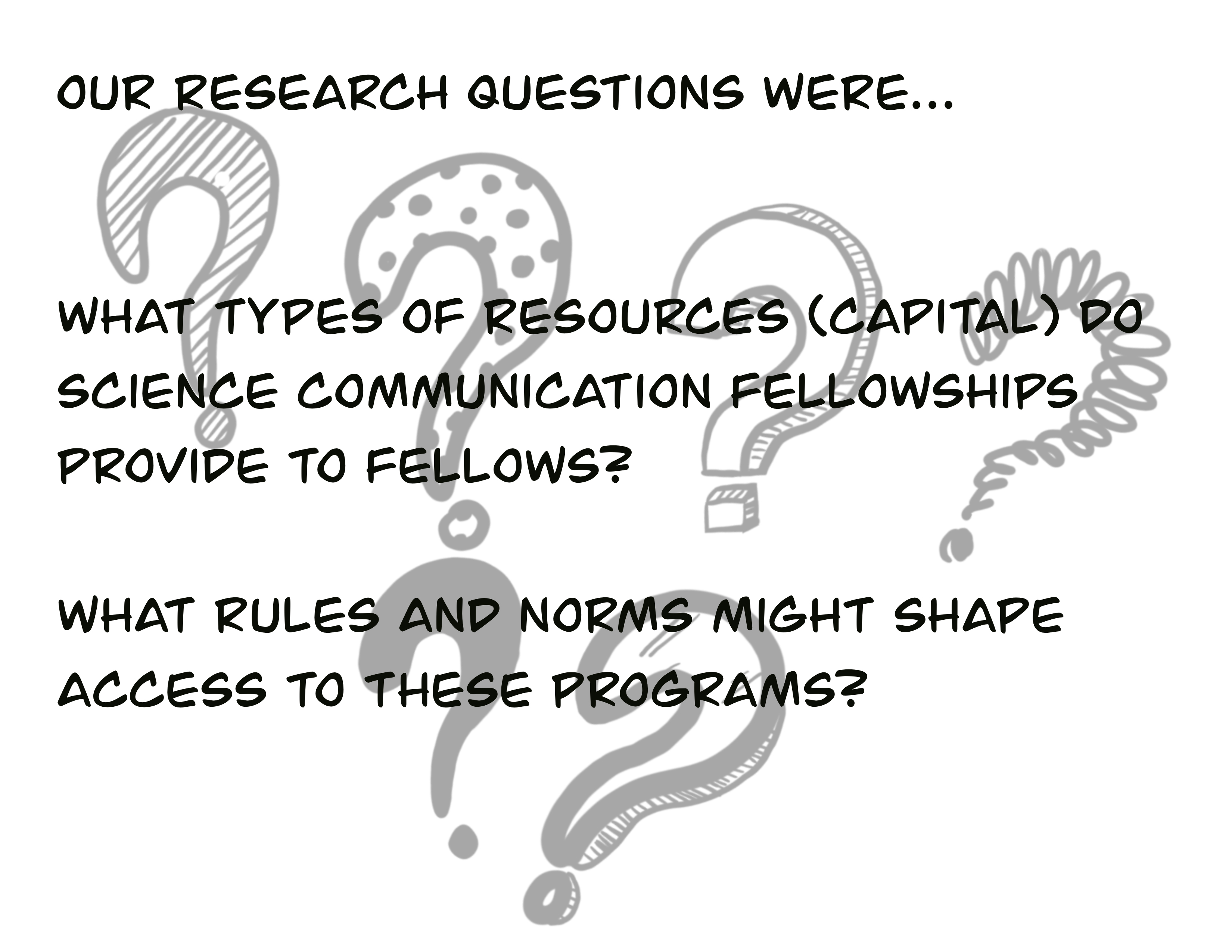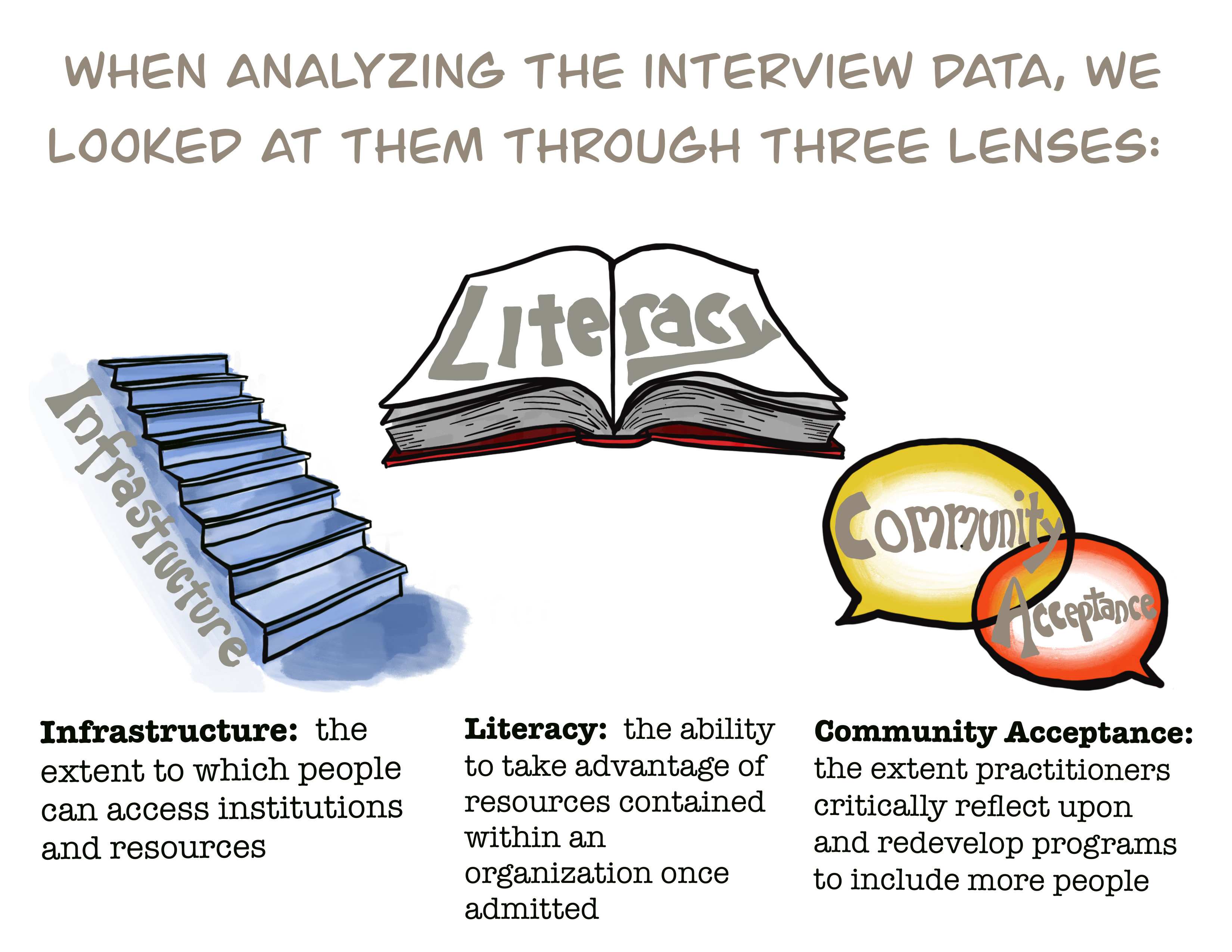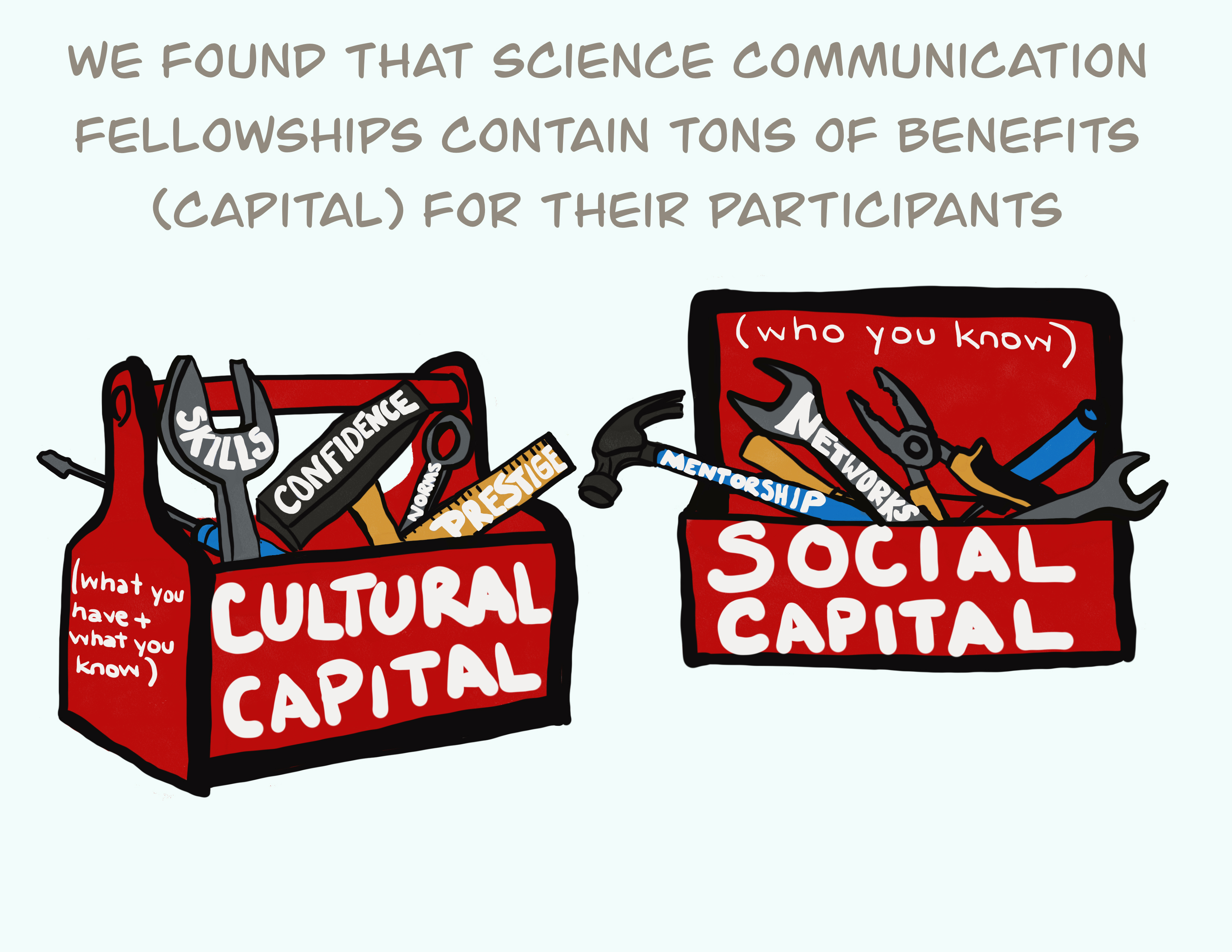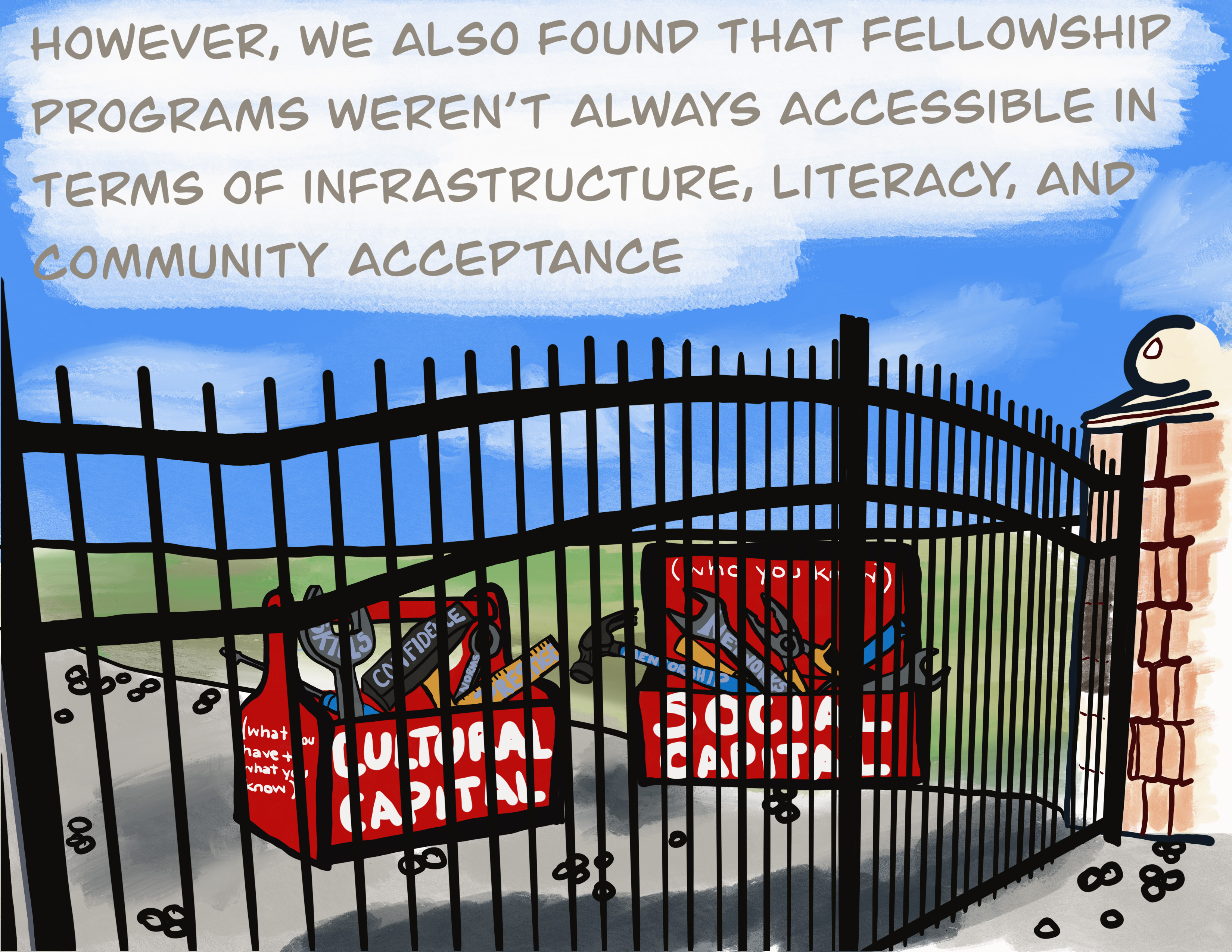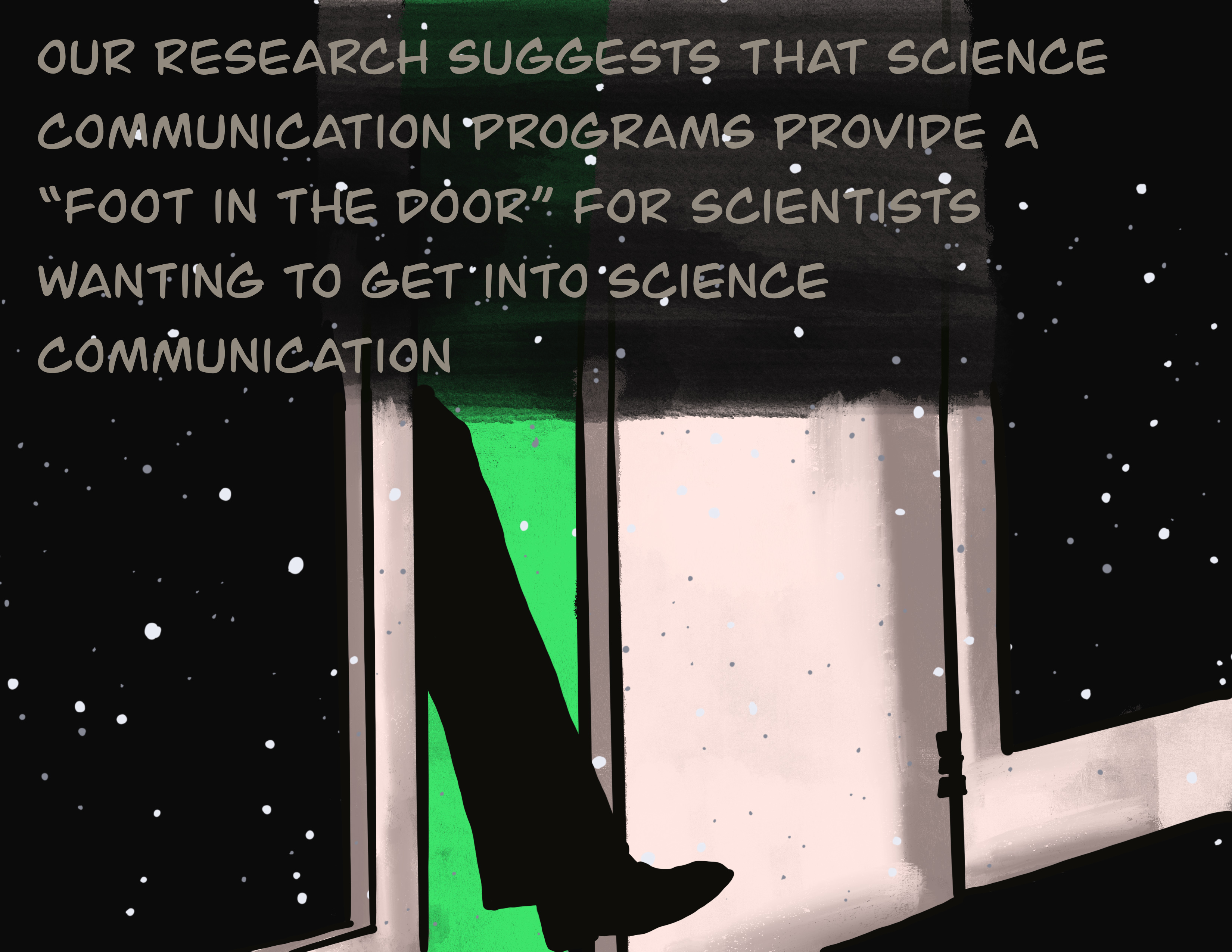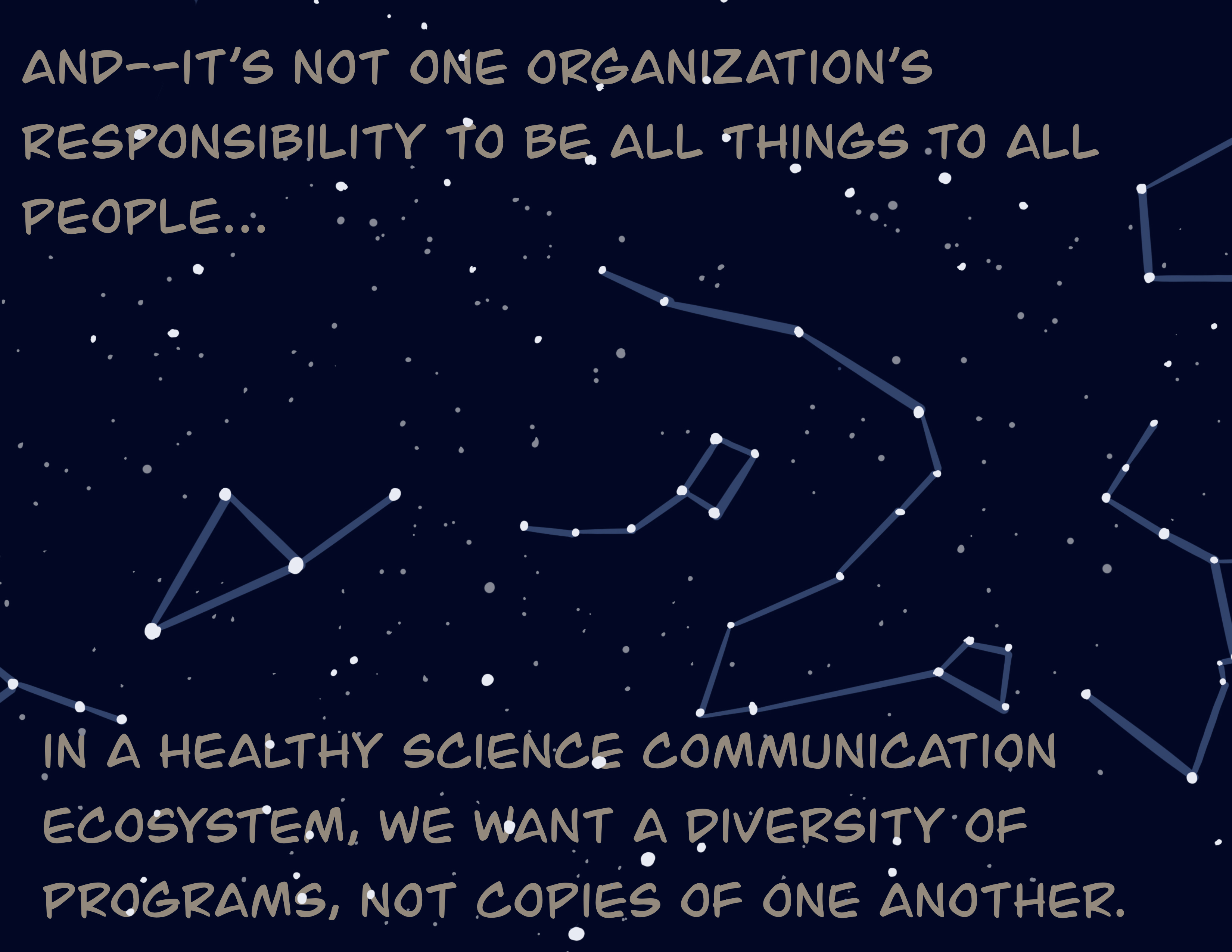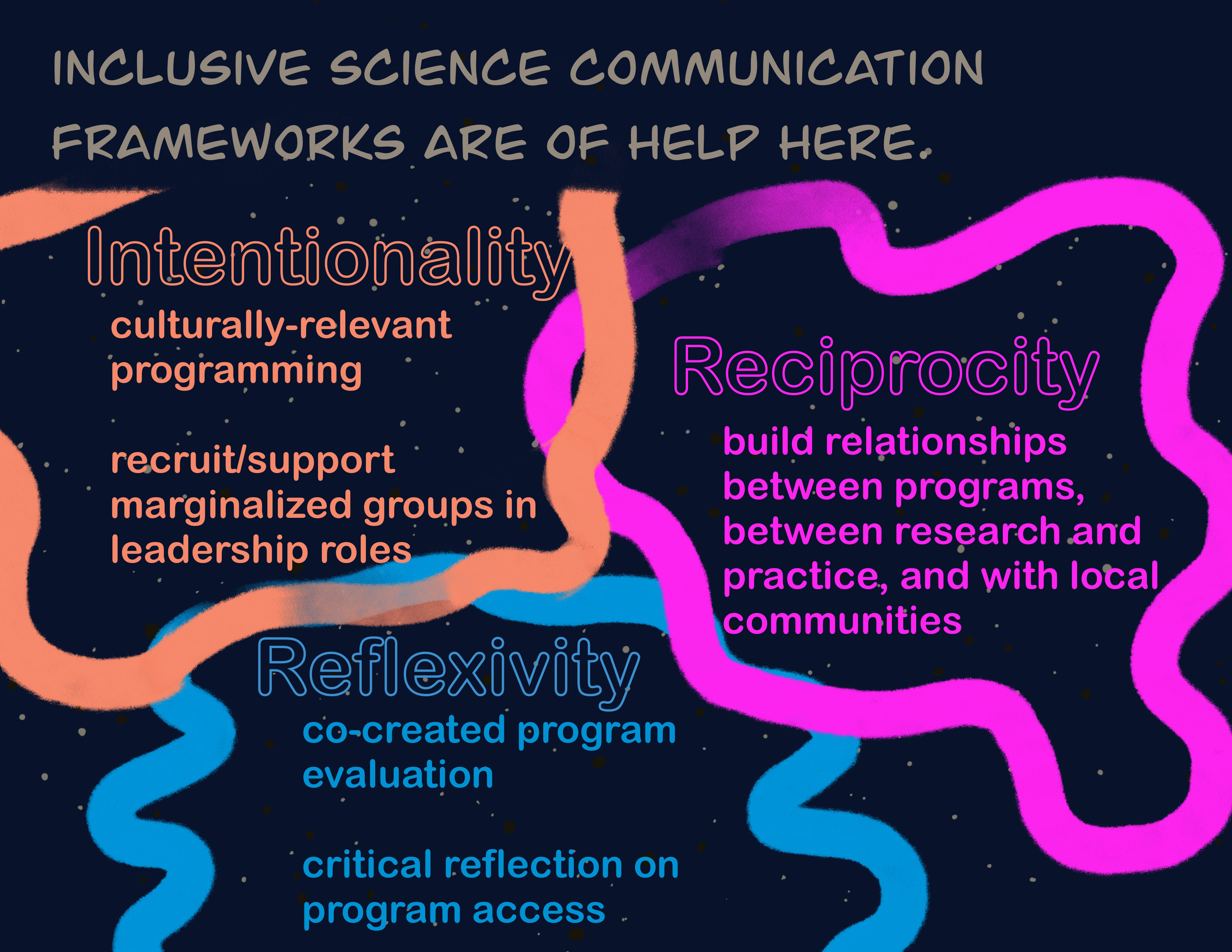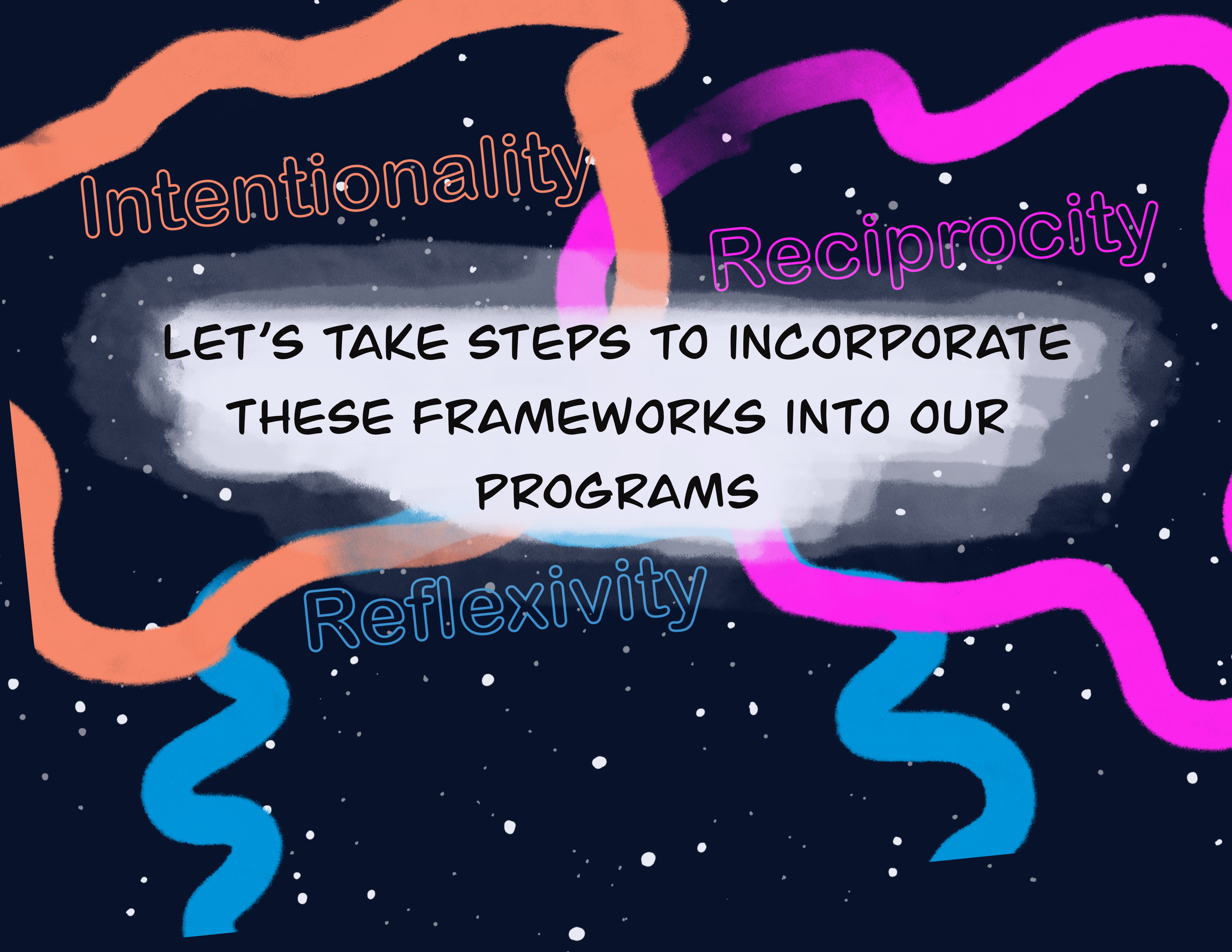Examining Access to the Rich Resources of Science Communication Fellowship Programs
Science communication training organizations are popping up all over the place.
Of these efforts, fellowship programs provide arguably the most intensive and impactful science communication training experiences available. Fellowship programs are becoming increasingly key to science communication practice, helping scientists across disciplines enhance their public engagement acumen and opportunities to engage.
However, not much was known about the landscape of these science communication fellowship programs or how accessible and inclusive they are. So, our research group interviewed science communication fellowship directors to find out more. This comic explains some of our key findings.
You can read the full article “Science communication fellowship programs as gatekeepers” by Bennett, Dudo, and Besley in Volume 31, Issue 7 of Public Understanding of Science.

